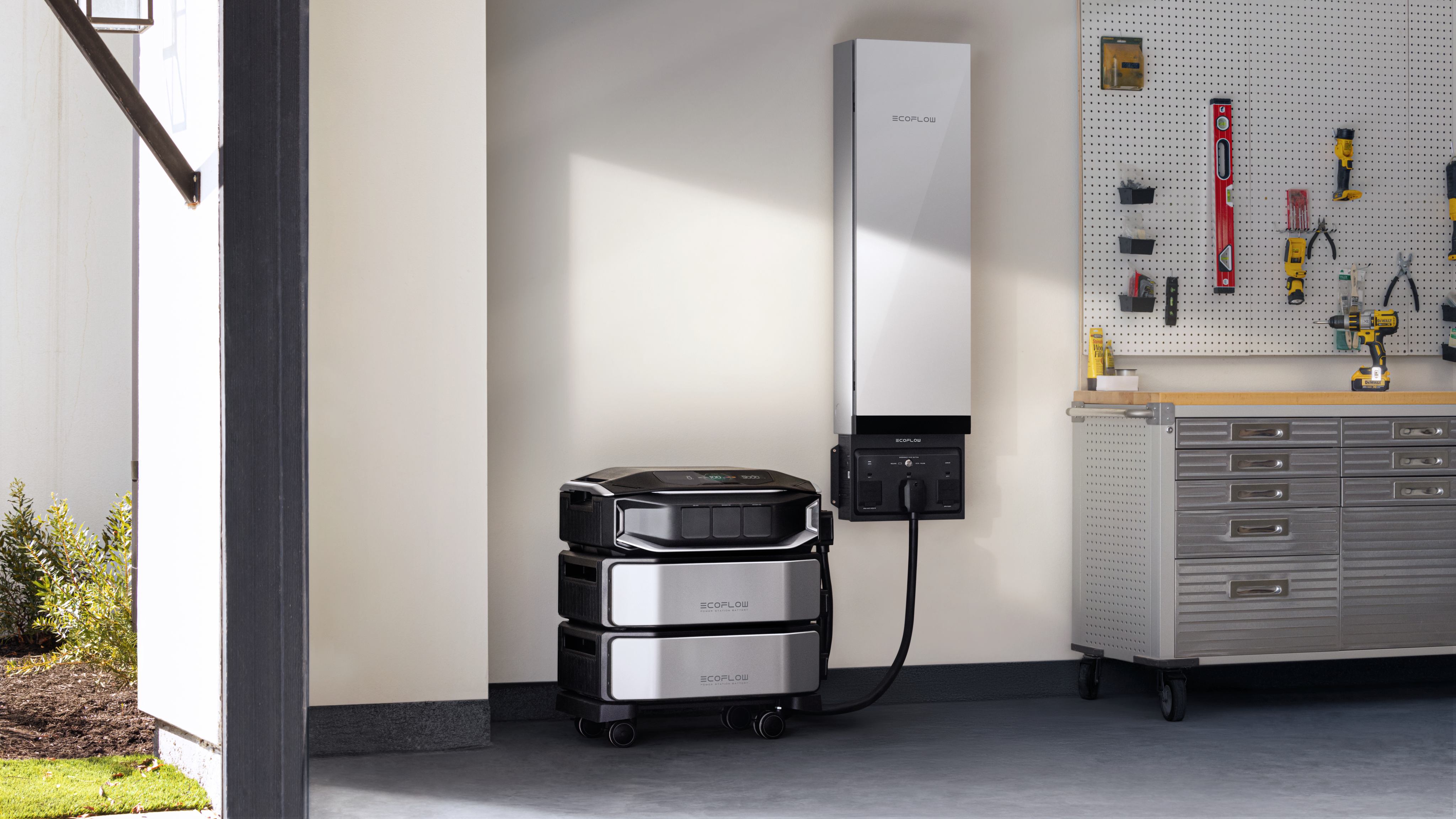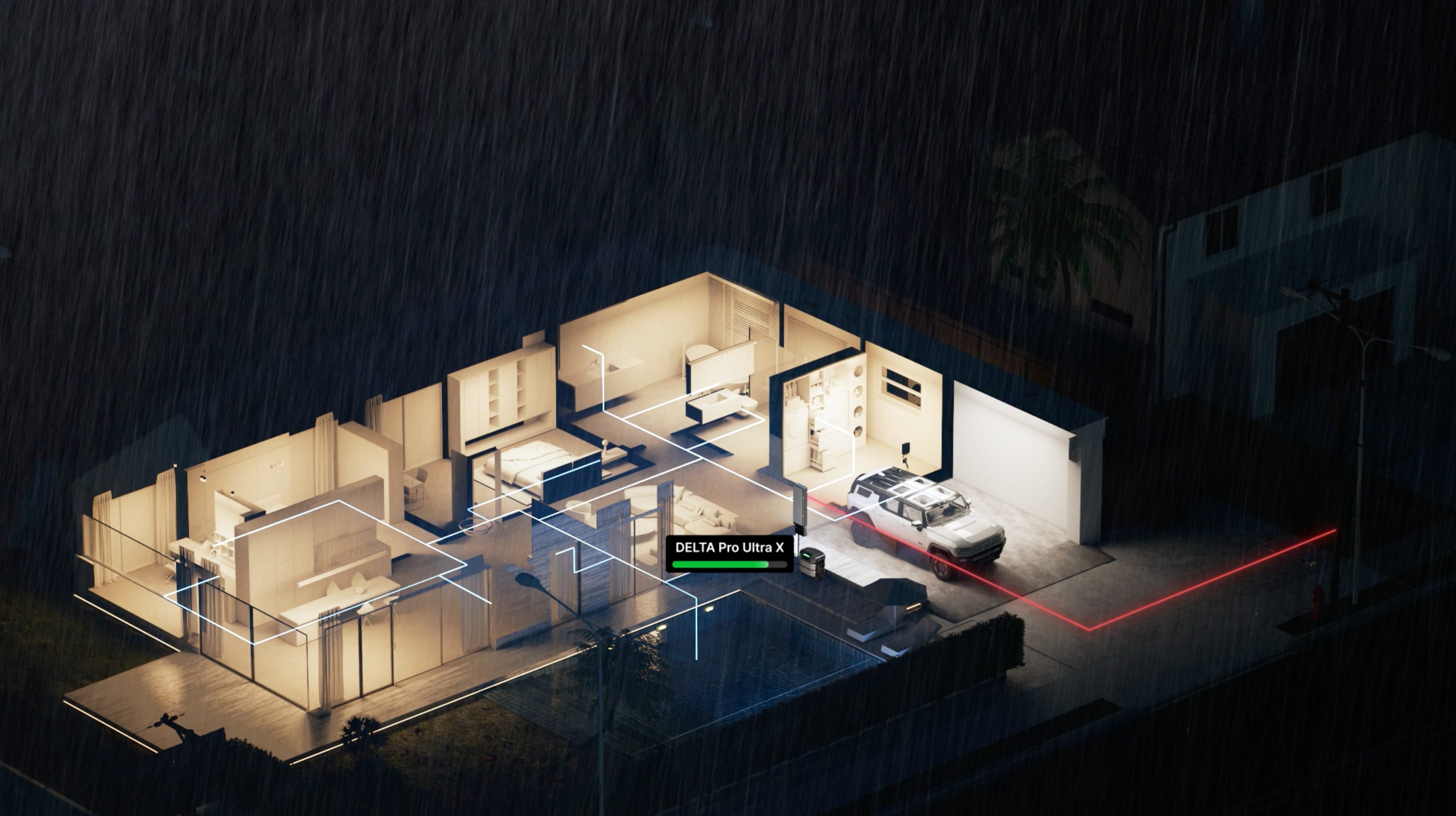How to Power Your Home Room by Room Strategically During Outages
When the power goes off, the house falls silent. When the lights go out, your mind probably goes to the most important things right away: preserving the food in the fridge from going bad and figuring out how to charge your phone. It's natural and practical to think about how to get power to each room. It feels manageable for many people preparing for an outage.
This text will show you how to make that smart, room-focused strategy by going over the tools and priorities you need. It also talks about when this strategy stops working and offers a new solution to keep your family safe and comfortable.
A Tactical Room-by-Room Plan for Your Home Power Backup
For short outages, a focused, room-by-room plan is a great way to manage your power needs without spending a lot of money at once. This method focuses on the most important things, making sure you can stay safe, save your food, and keep in touch.
The Kitchen Food Preservation Hub
The kitchen is the best place to start. A power outage that lasts more than a few hours puts all the groceries in your refrigerator and freezer at risk. Saving this food is all about making sure you have a food supply during an emergency.
To power a fridge, you need a device that can handle its specific power needs. A fridge might only use 100-200 watts to stay cold, but it needs a big jolt of energy to start its cooling motor. This is often called surge power, and it can be 1,000 to 2,000 watts. Your backup power for home choice must be able to provide that big burst of power.
A portable power station with at least 1,500 watt-hours (Wh) of capacity is a good choice. They are quiet and safe for indoor use but have a limited amount of stored power.
An inverter generator rated for over 2,000 watts will also work. Generators can run for a long time if you have fuel, but they are noisy and must be used outside because of the exhaust.
The Living Room Communication Center
Losing the internet can feel like being cut off from the world. Your living room or home office is your link to information, making it the second key zone. Keeping your modem and router on lets you get weather alerts and stay in touch with family.
Luckily, these devices don't use much power, usually around 10-20 watts. The perfect tool for this is a UPS (Uninterruptible Power Supply). A UPS is a small battery backup that your router plugs into. When the power goes out, it takes over instantly, keeping your Wi-Fi on for hours. For charging phones and laptops, a small portable power station or a few large USB power banks will do the trick.
The Bedroom Comfort and Safety Zone
The bedroom should be a safe and comfortable place, especially during a stressful outage. The top priority here is any important medical equipment, like a CPAP machine. These devices must have a reliable source of clean power to work right.
For medical gear, you must use a power source with a pure sine wave inverter. This technology creates clean electricity, just like what comes from a wall outlet, which protects sensitive electronics.
Beyond medical needs, this zone is about basic comfort.
Lighting: Use rechargeable LED lanterns instead of risky candles. They are brighter and much safer.
Comfort: Depending on the weather, a small power station could run a fan to keep you cool or an electric blanket to keep you warm.
A room-by-room plan is a strong first step for outage prep, giving you control over the most important things in your home. This approach helps you handle short power cuts with very little trouble.


When Portable Backup Power for Your House Isn't Enough
This piece-by-piece method works great for a power cut that lasts a few hours. But what happens if the power is out for two days, or even a week? You'll quickly find that this simple plan creates a whole new set of problems.
Too Much Work and Clutter
You become a full-time power manager. You are constantly moving a heavy power station, navigating a maze of extension cords, and swapping plugs between appliances. A simple plan quickly turns into a stressful, hands-on job.
The Constant Need for Fuel or Recharging
Generators require gasoline, which may be unavailable if gas stations lose power too. Portable power stations eventually run empty. With no grid power, finding a way to recharge them becomes a major challenge.
No Power for Critical Home Systems
Portable solutions can't run the heavy-duty equipment your home depends on. Your furnace, well pump for water, or sump pump to prevent flooding are all left powerless. These systems are crucial for safety and comfort during an extended outage.
Your Life Revolves Around the Outage
Instead of living comfortably through the outage, you are actively managing it. Daily routines are replaced with checking battery levels and rationing electricity. True security is a system that allows your family to maintain a normal lifestyle, not just survive.
For any outage lasting more than a day, the drawbacks of a portable setup are obvious. These challenges highlight the need for a more powerful and automatic solution.


The Ultimate Strategy for Home Backup Power Systems
Instead of creating small spots of power inside your home, a full system powers the entire house from the main electrical panel. This type of system is automatic, powerful, and smooth. It switches your home from the grid to backup power in just a few seconds. The goal is to keep your family's lifestyle normal, not just to get by. There are two main types of whole-home systems.
Home Standby Generator
A home standby generator is permanently installed outside your home, like an AC unit. It's connected to your home's natural gas or propane line. It works with an automatic transfer switch that knows when the power is out. The switch disconnects your home from the grid and starts the generator, bringing power back in under a minute.
Home Battery System
A home battery system is the second choice. These are large, rechargeable batteries installed in your garage or utility room. They store energy from the grid or from solar panels. Like a generator, they use an automatic transfer switch to take over when the power fails. They are completely silent and produce no fumes, offering a clean source of home backup power.
A great example of a modern home battery is the ECOFLOW Delta Pro Ultra X. It is powerful enough to run your entire home, including large appliances like a central air conditioner. Its key feature is that it can connect to a generator. This gives you the best of both worlds: silent battery power for short outages and nearly unlimited runtime for longer emergencies. You can also add more batteries as your needs grow, making it a very flexible and complete backup solution.
Feature | Room-by-Room Portables | Standby Generator | Home Battery System |
Activation | Manual (You plug it in) | Automatic (Starts itself) | Automatic (Switches over) |
Appliances Powered | A few chosen items | Almost the whole home | Almost the whole home |
Typical Runtime | Hours | Days (with fuel line) | Hours to multiple days |
Noise & Fumes | Some / None | Yes (Engine noise) | None (Silent) |
Convenience | Low (Needs management) | High (Works on its own) | High (Works on its own) |
Choosing a system for the whole house turns a stressful emergency into a small hassle. This level of readiness gives homeowners the best peace of mind.
Secure Your Home's Power and Peace of Mind
Don't only get ready for an outage; plan to ignore it. A room-by-room system keeps the basics on, but a whole-home system lets you live your life without interruptions. The ECOFLOW Delta Pro Ultra X is an advanced, versatile system that makes this degree of security easier to get than ever before. Find out how you can turn a major disruption into a complete non-event for your family.
FAQs About Backup Power Solutions
Q1: How long can a portable power station keep a refrigerator running?
The runtime depends on the power station's capacity, measured in watt-hours (Wh), and the fridge's energy use. A fridge that saves energy might utilize 500 to 800 Wh a day. If no other appliances are plugged into it, a 1500Wh portable power station might run it for around two days.
Q2: Is it safe to use a backup power generator in a home?
Yes, but you need to follow some key safety standards. You can't see or smell carbon monoxide, which is a lethal gas that generators create. They should only be used outside, at least 20 feet from any doors or windows. Also, to keep fires from starting, use heavy-duty extension cords that are meant for outside use. Do not plug a generator directly into a wall outlet.
Q3: Can I set up a backup power system for my home on my own?
No, installing a whole-home solution like a standby generator or battery unit should be done by a professional. Only licensed electricians can undertake the work. It requires intricate wiring at the main electricity panel and connecting fuel lines to generators. Putting something in the wrong place is a severe fire risk and is against the law.
Q4: Will having a backup power system make my home worth more?
A permanently installed backup power system might make your property worth more and more appealing to purchasers. This is especially true in places where the power goes out a lot. People think of it as a big improvement. People who want to buy it see it as a way to make their home safer and keep things like frozen pipes from breaking.